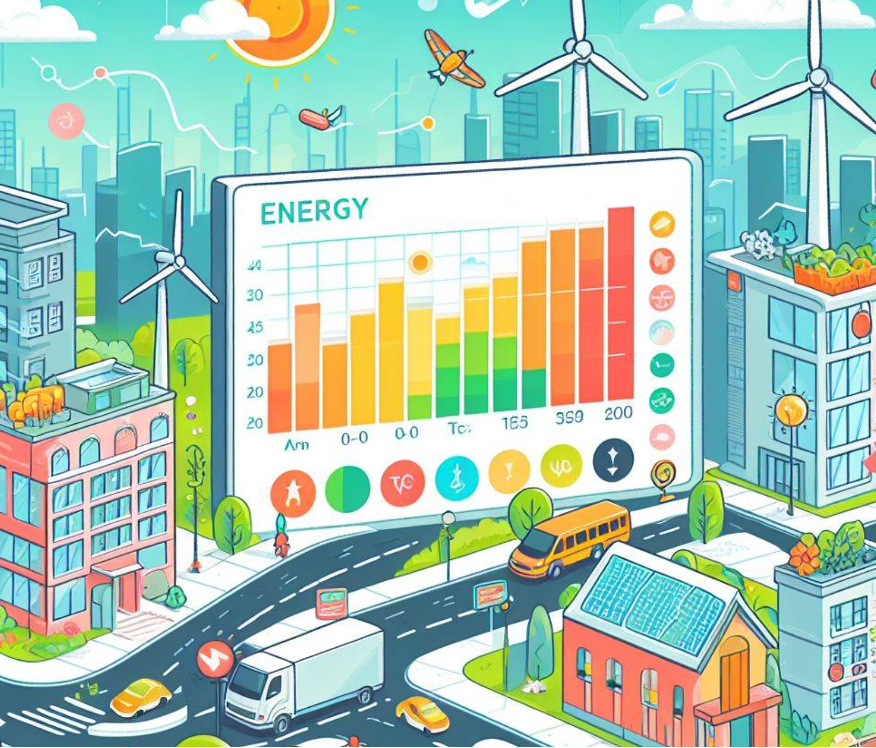Energy Forecasting: Utilising the Power of Tomorrow’s Data

Energy forecasting plays a pivotal role in our modern world, where energy consumption, production and pricing are critical factors.
Energy forecasting involves predicting the demand load and price of various energy sources, including both fossil fuels and renewable energy resources like wind and solar.
With an accurate energy usage forecast, a business can efficiently allocate and manage resources, this is crucial to maintain a stable energy supply to the consumer; energy forecasting is fundamental as we transition to renewable energy sources which do not produce consistent energy. Energy companies, grid operators and industrial consumers rely on forecasts to optimise their operations. Over- or undercontracting can lead to significant financial losses, so precise forecasts are essential.
Energy load prices and forecasts greatly influence the energy sector and the decisions made across multiple departments in energy companies. For example, medium to long-term energy forecasts are vital for planning and investing in new capacity, they guide decisions on new assets, transmission lines and distribution networks. Another example is risk mitigation, unstable electricity prices can be handled with accurate forecasting of the market, companies can develop bidding strategies, production schedules and consumption patterns to minimize risk and maximize profits.
Energy forecasting is focused on performance, i.e. how much over or under a forecast is and performance during extreme weather days. Quantifying a financial impact relative to market conditions can be diffcult. However, a rough estimate of savings from a 1% reduction in the mean absolute percentage error (MAPE) for a utility with a 1 GW peak load includes:
- $500,000 per year from long-term load forecasting
- $300,000 per year from short-term load forecasting
- $600,000 per year from short-term load and price forecasting
Energy Forecasting allows for significant cost avoidance due to better price forecasts and risk management.
Energy Forecasting with RTDIP
RTDIP can be a powerful tool for businesses looking to forecast energy usage. RTDIP supports load forecasting applications, a critical technique used by RTOs (Regional Transmission Organisations)/TSO (Transmission System Operators), ISOs (Independent System Operators) and energy providers. Load forecasting allows a business to predict the power or energy needed to maintain the balance between energy demand and supply on the grid. Two primary inputs for load forecasting are weather data and meter data, RTDIP has developed pipeline components for these types of data.
RTDIP provides example pipelines for weather forecast data ingestion. Accurate weather data helps predict energy production in renewable assets based on factors like temperature, humidity and wind patterns.
RTDIP defines example pipelines for meter data from ISOs like MISO (Midcontinent ISO) and PJM (Pennsylvania-New Jersey-Maryland Interconnection). Meter data can include consumption patterns, load profiles and real-time measurements. The sources and transformers in RTDIP can aquire and translate meter data into suitable data models for efficient storage and analysis.
The data models in RTDIP are aligned to the IEC CIM (Common Information Model) for time series and metering data. This aids compatibility with systems requiring data aligned with the IEC CIM standard.
Building Pipelines for Energy Forecasting
RTDIP allows you to develop and deploy cloud agnostic pipelines with popular orchestration engines. There are a number of RTDIP components focused on weather and metering data, these are all listed below.
Sources
Data aquistion via source connectors
Transformers
Data conversion into 'Meters Data Model' via transformers
Raw Forecast to Weather Data Mode
ECMWF NC Forecast Extract Point To Weather Data Model
ECMWF NC Forecast Extract Grid To Weather Data Model
Contribute
RTDIP empowers energy professionals to share solutions, RTDIP welcomes contributions and recognises the importance of sharing code. There are multiple sources for weather and metering data crucial to forecasting energy needs, if you have anymore you’d like to add to RTDIP please follow our Contributing guide.
